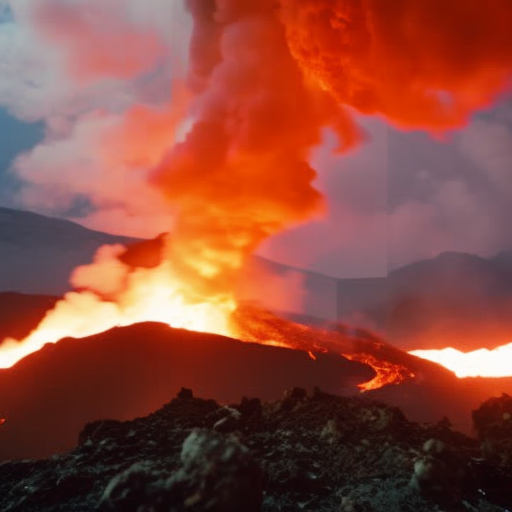Summary:
Volcanology is the scientific study of volcanoes, including their formation, eruption mechanisms, and the associated geological phenomena. It involves the study of magma, volcanic eruptions, volcanic landforms, and the impact of volcanic activity on the Earth’s surface and atmosphere. Volcanologists use various techniques to monitor and study volcanoes, including remote sensing, seismology, gas analysis, and field observations. Understanding volcanology is crucial for predicting volcanic eruptions and mitigating their potential hazards.
Introduction:
Volcanology is a branch of geology that focuses on the study of volcanoes and volcanic activity. It encompasses a wide range of scientific disciplines, including geophysics, geochemistry, petrology, and geology. Volcanologists aim to understand the processes that lead to volcanic eruptions, the behavior of magma beneath the Earth’s surface, and the impact of volcanic activity on the environment and human populations.
Volcano Formation:
Volcanoes are formed when molten rock, called magma, rises to the surface. This magma is generated by the melting of the Earth’s mantle, usually at plate boundaries or hotspots. The type of volcano that forms depends on the composition of the magma and the style of eruption. There are three main types of volcanoes: stratovolcanoes, shield volcanoes, and cinder cone volcanoes. Stratovolcanoes are characterized by their steep slopes and explosive eruptions, while shield volcanoes have gentle slopes and effusive eruptions. Cinder cone volcanoes are small, cone-shaped volcanoes formed by the accumulation of volcanic debris.
Eruption Mechanisms:
Volcanic eruptions can be explosive or effusive, depending on the viscosity of the magma. Explosive eruptions occur when highly viscous magma traps gases, leading to a buildup of pressure. When this pressure is released, it results in a violent eruption, ejecting ash, gases, and pyroclastic materials into the atmosphere. Effusive eruptions, on the other hand, occur when low-viscosity magma flows out of the volcano in a relatively gentle manner. These eruptions are characterized by the formation of lava flows and the release of gases.
Volcanic Hazards:
Volcanic eruptions can pose significant hazards to both human populations and the environment. The primary hazards associated with volcanic activity include pyroclastic flows, ashfall, lahars (mudflows), volcanic gases, and volcanic landslides. Pyroclastic flows are fast-moving currents of hot gas, ash, and rock fragments that can travel down the slopes of a volcano at high speeds, destroying everything in their path. Ashfall can cause respiratory problems, damage infrastructure, and disrupt air travel. Lahars are mixtures of volcanic debris and water that can flow down river valleys, causing extensive damage. Volcanic gases, such as sulfur dioxide, can have harmful effects on human health and the environment. Volcanic landslides, also known as volcanic avalanches, can occur when the unstable slopes of a volcano collapse, triggering a rapid downhill movement of rock and debris.
Monitoring and Prediction:
Volcanologists use various techniques to monitor volcanoes and predict eruptions. These techniques include remote sensing, seismology, gas analysis, and field observations. Remote sensing involves the use of satellites and other instruments to monitor changes in volcanic activity, such as ground deformation and gas emissions. Seismology is used to detect and analyze volcanic earthquakes, which can indicate the movement of magma beneath the surface. Gas analysis involves measuring the composition and quantity of gases emitted by a volcano, which can provide insights into the state of the magma chamber. Field observations involve collecting data on the physical characteristics of a volcano, such as its shape, size, and eruptive history.
Conclusion:
Volcanology plays a crucial role in understanding and mitigating the hazards associated with volcanic activity. By studying volcanoes and their behavior, scientists can improve eruption prediction and develop strategies to minimize the impact of volcanic eruptions on human populations and the environment. The field of volcanology continues to evolve with advancements in technology and scientific understanding, contributing to our knowledge of Earth’s dynamic processes.












